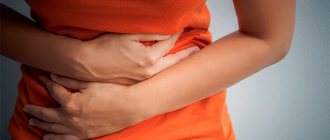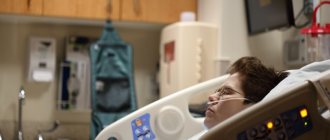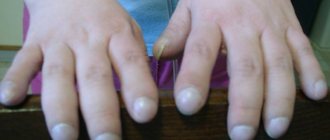Aspirin , or acetylsalicylic acid, is a medicinal substance belonging to the group of so-called non-steroidal anti-inflammatory drugs.
It includes drugs familiar to many, such as ibuprofen (Nurofen, Faspik, Advil), nimesulide (Nimesil, Nise), meloxicam (Movalis, Artrosan) and some others, but only aspirin has a unique effect on platelets.
Aspirin does not thin the blood.
In fact, it is a myth that aspirin thins the blood. How “thin” a person’s blood is depends on the content of hemoglobin and red blood cells in it (a person with anemia has more “watery” blood), as well as on the amount of fluid consumed. Aspirin reduces the ability of blood to clot, that is, to form blood clots, and does not affect its “thickness.”
Contraindications
The drug has relative and absolute contraindications. You should refuse to take it if you have allergic reactions to the constituent components, as well as in conditions where bleeding may begin.
Relative contraindications include:
- bronchial asthma;
- problems with kidney function;
- diabetes;
- age up to 12 years;
- chronic gastrointestinal diseases;
- period of bearing a child;
- breastfeeding period.
If there are relative contraindications, then taking the drug is possible only after examination by a doctor and his approval.
A neurologist named common mistakes in the fight against migraine
When people in any country in the world are asked what spoils their health most often, the undisputed leader emerges: headaches. It can begin after vaccination against coronavirus and is painful when contracting covid. Pierces during strokes and torments during brain tumors. However, in the vast majority of cases, there are two types of so-called primary headaches, that is, not associated with other diseases (as opposed to secondary pain, for example, with tumors or vascular accidents). These are tension headaches and migraines. The latter, according to the World Health Organization, affects more than a billion people, or every seventh inhabitant of the Earth. Every September there is a special International Migraine Awareness Week. What scientists and doctors have learned about this scourge recently and what misconceptions about migraine and its treatment are most common today, Margarita Naprienko, the head physician of the Academician Wayne Clinic for Headache and Autonomic Disorders, neurologist, Doctor of Medical Sciences, Professor at Sechenov University, told reporters.
PROBLEM 1: THIS IS NOT A DISEASE “Traditionally, in Soviet times, and I was still in this period, we practically did not treat headaches,” says Professor Naprienko. - On the one hand, there was such a disease, everyone knew it. On the other hand, it was as if it did not exist, because our patients could not receive sick leave. There were common expressions like “Migraine - too lazy to work”, they are still tenacious. And many patients do not come to specialists for precisely this reason. According to epidemiological data, with episodic migraine, which occurs up to eight times a month, only every fourth person consults a doctor. If headaches occur more often, only half, every second, go to specialists.
In fact, migraine, of course, is a full-fledged independent disease, the expert explains. Although, even today this disease remains a mystery for scientists and doctors.
PROBLEM 2: WHERE DOES IT COME FROM - The final theory of the origin of migraine and the development of the attack has not been formed. Great steps have been taken in this direction; some of the processes are clear to specialists, but the mechanism has not yet been fully studied,” says Margarita Naprienko. “We know that there are people with a certain functioning of the brain: they are susceptible to easy arousal under the influence of a variety of provoking factors. Against the background of such provocateurs, certain neurochemical processes in the brain are triggered, during which the levels of various substances change. Among them is serotonin, popularly known as the “pleasure hormone.”
Under the influence of the ongoing processes during migraine, the so-called “cortical spreading depression” develops, the doctor continues. It manifests itself in a decrease in the electrical activity of brain cells. “This wave travels through the brain tissue, causing vasoconstriction, which leads to decreased blood flow to the brain. During this period, people may experience a headache precursor such as an aura (see details below), says the professor. “However, this wave passes quickly enough, and the vessels begin to expand. Inflammation develops in them, blood flows into the inflamed wall of the vessel, and during this period people begin to feel pain.”
With migraine with aura, a cascade of different neurological symptoms is observed before the headache attack.
- These may be changes in vision, sensitivity, speech impairment. But it is very important that these changes are reversible, that is, they can last from five minutes to an hour, and must pass without fail, emphasizes Dr. Naprienko. “When this happens for the first time, patients get very scared, and doctors can’t always figure it out. Such reversible symptoms may be mistaken for acute cerebrovascular accidents (stroke).
PROBLEM 3: THERE IS NO LIFE THREATENING, BUT ITS QUALITY IS RADICALLY DECREASING Migraine is not a life-threatening disease, explains Margarita Naprienko. And because of this, patients often encounter misunderstandings from acquaintances, loved ones, colleagues and employers.
- The person seems to be healthy, his arms and legs are in place, he stands, he can work from the point of view of others. And at the same time he says that he cannot do anything. I am not aware of any cases where employers fired people because of migraines in Russia. But families in which migraine caused serious problems in relationships met at the reception. It was even necessary to write ridiculous certificates stating that the patient might actually be poorly able to work or completely incapacitated for a certain period of time. And, accordingly, during this period they are recommended to have relative peace.
What will happen if you do not engage in special treatment for migraines, endure attacks, and in the case when they are completely unbearable, call an ambulance? This is the approach that most patients practice, the doctor confirms.
- Of course, you can endure it, understanding that the attack will end. But it’s one thing if a person is not burdened with anything, does not work, and has no children requiring supervision. Then, perhaps, he can lie down in a dark room and wait for the torment to pass. But if continuous vomiting and a bursting headache begin, then people call an ambulance. Alas, in fact, it cannot greatly alleviate the condition of migraines, explains Professor Naprienko. — Yes, against the background of severe pain, a person’s blood pressure may jump and panic may begin, then sedatives will be administered to normalize the pressure. But the ambulance does not have the resources to act on the pain attack itself during a migraine.
PROBLEM 4: HOW TO BE TREATED? There are two approaches, the expert says. For episodic migraines (attacks no more than 8 times a month), medications are used to relieve headache attacks. If migraine occurs frequently, then preventive therapy is prescribed - it makes attacks less frequent and reduces pain.
“It is impossible to completely recover from migraine, because it is a genetically determined disease,” explains Margarita Naprienko. “But today it is quite possible to make attacks rare and not severe, which most patients do not know about.
The gold standard for treating a migraine attack is taking aspirin, the professor continues. “Better than effervescent, always in a large dosage, 1,000 mg (pay attention to contraindications! - Ed.). Anti-nausea medications may also be added if present. Very often, during a migraine attack, medications are poorly absorbed in the stomach, and then we prescribe drugs that enhance peristalsis. And we recommend low doses of caffeine. This could be a cup of sweet tea, coffee or even Coca-Cola.
An important point: if a person has a headache, it is extremely undesirable to immediately take a pill, emphasizes Dr. Naprienko. The body has a system to counteract pain and it is quite possible that it will cope without allowing an attack to develop. The same tea, coffee or cola can help. Taking painkillers too often and too quickly can lead to the development of so-called drug-induced headaches, warns a neurologist.
- If an hour has passed and your head still hurts, then you need to take triptans. They were created specifically for the relief of migraine attacks and made a real revolution (the first medicine of this class was registered back in 1991 - Ed.). Just keep in mind that triptans cause vasoconstriction, so they are not recommended for use during a migraine aura (see above) - if a person develops this condition, it is advisable to take aspirin first. Perhaps it will allow you to avoid an attack altogether. If not, then after the aura disappears, a triptan is taken.
PROBLEM 5: ADDITION TO MEDICINES “Triptans, which quickly relieve an attack and return a person to work, have a peculiarity: if used incorrectly, addiction to them can quickly develop,” notes Professor Naprienko. “That’s why we always warn patients: they need to strictly control the amount of medications they take. As soon as the figure exceeds 8 doses per month for triptans and 10-12 for simple analgesics (aspirin, citramone, paracetamol, ibuprofen, etc.), this is a direct indication for contacting a specialist. So that the patient is prescribed adequate therapy and preventive treatment is selected.
If you continue to swallow painkillers in huge doses and in huge quantities, then the aforementioned drug-induced headache develops, and the person ends up in a vicious circle, the doctor explains.
For the treatment of frequent, chronic migraines, botulinum toxin type A drugs are used as a preventive treatment, as well as new generation drugs based on monoclonal antibodies. The latter appeared in our country quite recently, about a year ago, and only a doctor can select and prescribe them.
STAY IN THE KNOW How to recognize a migraine
To make a diagnosis, doctors interview the patient. You can check yourself yourself. Here are the main signs of migraine:
- headache attacks last from 4 to 72 hours and are repeated;
- pain has at least two characteristics from the list: strong, throbbing, one-sided, makes you move less (intensifies with bending over, physical activity);
- there is also at least one of these symptoms: nausea, irritation by light and (or) sounds.
Link to publication: kp.ru
Adverse reactions and overdose
While taking the medicine, undesirable reactions may occur:
- increased susceptibility to the constituent components, manifested by skin rash;
- pain in the abdomen.
With regular and frequent use, in rare cases, bleeding from the stomach may begin, which is manifested by the following symptoms:
- anemia;
- malaise;
- unbearable pain in the stomach.
If such signs appear, you should immediately stop taking it and inform a specialist.
An overdose of the drug is manifested by the following symptoms: nausea, vomiting, hearing problems, confused thinking.
Features of symptoms for COVID-19
Pain in the head area in people with coronavirus infection can be squeezing, throbbing, dull or bursting. The nature of the pain syndrome depends on the cause of its occurrence. Often, cephalalgia is associated with a chronic disease that worsens against the background of an infectious process. If a person suffers from migraines, the discomfort does not go away for a long period of time. With cervical osteochondrosis, pain intensifies during movements or in a certain position of the body.
Weakness, cough, muscle aches, increased body temperature are additional symptoms of coronavirus infection. Fever is often accompanied by a painful headache. Patients also complain of heaviness in the head, tingling in the extremities, and impaired taste or olfactory sensitivity. These are other signs of the virus affecting the nervous system.
Headache without fever
An increase in body temperature during coronavirus infection is not observed in all cases. Such a symptom may be absent throughout the entire period of the disease. Many patients experience only a slight low-grade fever that does not affect their overall well-being. In most cases, cephalalgia is not directly related to body temperature, so the absence of fever cannot be an obstacle to the occurrence of pain.
What to do if you have a headache?
Since this is a characteristic manifestation of coronavirus in most patients, there is no need to panic. Experts advise monitoring your general health, breathing and blood oxygen levels. It is recommended to periodically perform pulse oximetry to determine saturation. If other signs of coronavirus infection are observed, you should call a doctor for a general examination and assessment of the severity of the condition. If necessary, the therapist will prescribe diagnostic procedures or give a referral for hospitalization.
Self-medication for COVID-19 is fraught with dangerous complications. The patient will not be able to independently determine the cause of cephalgia, and without a diagnosis it is impossible to carry out treatment. If the pain quickly intensifies and is accompanied by alarming symptoms, you should immediately call an ambulance. On-site doctors will take the necessary measures to determine the cause of the illness and exclude complications related to Covid.
Diagnostics
A general practitioner examines patients with coronavirus. If necessary, a consultation with a neurologist is scheduled. The specialist collects anamnestic data to evaluate all complaints and determine the severity of the condition. A neurological examination is performed to exclude damage to the central nervous system. Taking into account the results of the examination, instrumental and laboratory research methods are selected.
Types of diagnostic procedures:
- Analyzes. Clinical and biochemical blood tests are necessary to determine the severity of COVID-19 and identify inflammatory complications. A coalogram will show increased blood clotting, predisposing to the formation of thrombosis.
- Computed tomography or magnetic resonance imaging are highly accurate visual research methods. The doctor receives volumetric layer-by-layer images of the brain and other structures, allowing them to detect focal changes. CT and MRI are suitable for diagnosing vascular pathologies.
- Electroencephalography is a method for assessing brain functioning by recording bioelectrical signals. EEG results will show signs of neurological diseases.
- Echoencephalography with Dopplerography to detect vascular pathology of the brain. This is a real-time visual examination that allows you to assess the nature of blood circulation and the condition of the vascular bed in the head area.
- Lumbar puncture is the collection of cerebrospinal fluid from the subarachnoid space using a puncture. The results indicate inflammatory or infectious damage to brain tissue.
Headache does not always require special diagnostic measures. In most cases, an examination and exclusion of Covid-related complications is sufficient.
Medical recommendations
Therapeutic measures are not always required. If a patient suffers from tension cephalgia or migraine during an infectious disease, it is possible to reduce the severity of pain and the frequency of attacks. To do this, you need to follow the following recommendations from experts:
- Drinking enough fluids. The infectious process leads to the accumulation of large amounts of toxins in the body. An adult should drink at least 2 liters of water per day to quickly eliminate harmful substances in the urine.
- Maintaining bed rest. Inflammation caused by infection depletes the body's resources, so there is no need to overload yourself with physical activity. It is important to stay in bed at least during the first 3-5 days of the coronavirus infection.
- Neck and back massage. Gentle massaging movements in the occipital and cervical areas will improve blood circulation and eliminate excess muscle tone.
The listed recommendations should be considered only as a supplement to the treatment regimen prescribed by a specialist.
Prevention
The headache will not occur or will quickly go away on its own if the patient takes preventive measures. During the course of the infectious process, it is important to give up any bad habits that provoke the development of pain. You should not smoke, drink coffee or alcoholic beverages. It is necessary to refrain from physical activity until complete recovery. Increased sleepiness due to coronavirus leads to disruption of the daily routine, so you should try to sleep only at night.
If there is a history of any disease of the cardiovascular or nervous system, treatment should be carried out according to medical prescriptions after infection. Monitoring blood pressure, pulse and saturation will help to detect in time a deterioration in the condition or an exacerbation of an existing pathology. If you detect any dangerous signs, you should immediately seek medical help.
Specialists from the Clinical Institute of the Brain will clarify the cause of cephalgia and carry out the necessary therapeutic measures to eliminate the pathological condition. Our doctors will also select an individual rehabilitation scheme, taking into account the identified complications of coronavirus infection from the central nervous system.









